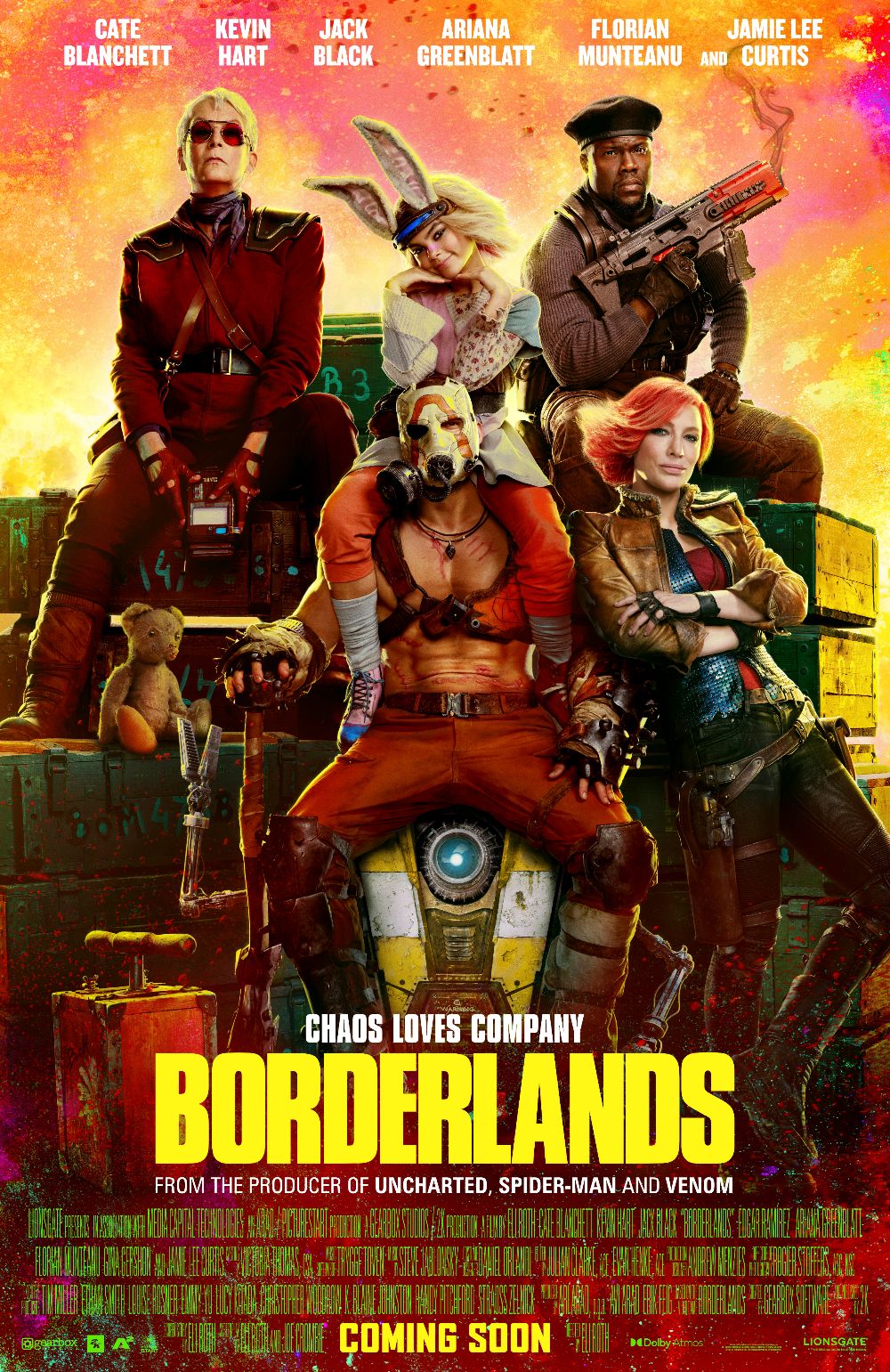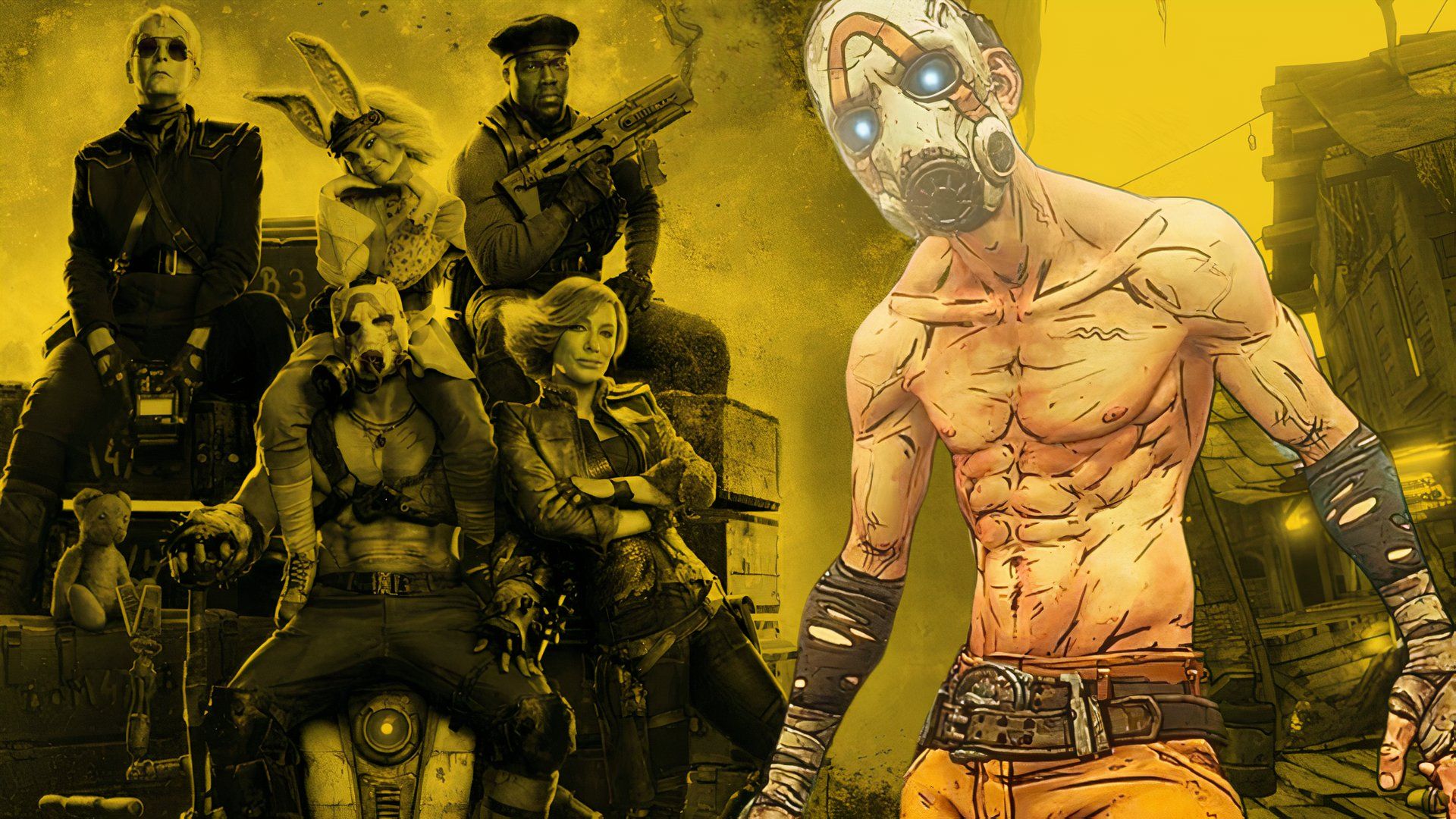Summary
- The
Borderlands
movie deviates from the source material, causing fan disappointment. - Director Eli Roth made substantial changes to the characters and plot of the game series.
- Video game adaptations making significant changes risk alienating fans, which can also lead to a box office disaster.
It’s no secret at this point that Lionsgate’s release of Borderlands has turned into a disaster of epic proportions. The writing was on the wall as soon as the first reactions emerged, calling the film lifeless, dull, and just another bad video game adaptation, to name a few of the choice words thrown the film’s way. The result was a rather dismal 9% rotten rating on Rotten Tomatoes, and the news wasn’t much better by the end of its opening weekend.
On a reported $115-120 million budget, Borderlands opened to a mere $8.6 million, making it a total miracle if it’s able to gross $20 million on the domestic front at the box office. There is a ton of speculation about what went wrong here, but one thing stands out that has been an issue for many video game adaptations, even when they are financially successful. Borderlands deviates from the source material of the video game in so many ways that it doesn’t really feel like a live-action version of the game that fans love. A decision to do this is nothing new, but one has to wonder why video game movie adaptations tend to do this when the mythology from these games tends to be strong, and changing things too much is bound to anger fans.
Borderlands Is a Beloved Video Game with a Sizable Fan Base
The Borderlands video game was released in 2009 after being developed by Gearbox Software. The game is an action role-playing first-person shooter that follows a group of four Vault Hunters who travel to Pandora to search for a rumored destination of alien technology known as “The Vault.”
In gameplay, hunters piece together various clues to find the Vault, but the journey is full of obstacles, including other bandits that inhabit the planet. To succeed, the hunters come together to stop the Atlas Corporation from getting to the Vault before they do. The series has spawned seven games and has shipped 77 million copies across its installments, bringing its revenues to over $1 billion. With such profits, the Borderlands series is one of the best-selling video game franchises of all time.
Eli Roth Had No Intention of Making a Straight Adaptation of the Video Game
Given the success of the game series, one would think that a straightforward adaptation of the game would be relatively easy, but director Eli Roth wasn’t interested in just adapting the game, continuing a trend that has been a mistake when these films are given the big screen treatment. It’s possible that the original script by Craig Mazin, the man behind the critically acclaimed TV video game adaptation of The Last of Us, was significantly better, but what it became in rewrites was so far from his initial vision that he had his name removed from the project.
It’s clear during interviews before and during the film’s promotion that Roth was more interested in using the framework of the games to create his own version of Mad Max, Escape From New York, or Star Wars. Roth’s answer during a red-carpet interview with The Hollywood Reporter at the premiere is very telling as to what may have gone wrong here.
Roth mentions wanting to stay true to the game’s visual aesthetic and feel but mentions that he wanted to toy with things like casting and the story to create a big and fun popcorn movie. So, while many of the characters that fans have grown to love may look like their video game counterparts, for example, their role in the film deviates significantly from the source material to fit into the story Roth wanted to tell. There is nothing wrong with creative liberties, but the project is no longer made for the fans when the story becomes completely different from the material that inspired it.
Related
Take-Two Urges Borderlands Fans to ‘Give the Film a Chance’ Following Blistering Reviews
Take-Two CEO urges audiences to give Borderlands movie a chance despite poor reviews, emphasizing the hard work of cast and crew.
Roth’s biggest issue, which might not feel like one at first, is that the characters in the film are being pulled from across different installments of the games, which means origins and character details are changed to fit into a new narrative that veers away from a basic adaptation of the first game. For instance, the Vault Hunters that make up the team in the first game and film are decidedly different. The roles of Lilith (Cate Blanchett) and Roland (Kevin Hart) are depicted in the movie and come from the first game, but Mordecai and Brick are absent from the movie adaptation despite being featured as Vault Hunters in the first game installment.
Tiny Tina (Ariana Greenblatt) isn’t in the first game and is a supporting player in Borderlands 2. The character has seen a rise in popularity, and including her here was likely done to tap into that. Her bond in the game is with the character of Brick, who is not featured in the movie. The bond in the film comes in the form of her connection with Krieg (Florian Munteanu), although his intentions for working with the Vault Hunters are changed for the movie.
Changes such as these don’t seem necessary, especially since fans are so enthralled with these games that even the most minor changes, for no real reason other than Roth’s personal discretion, are bound to turn them off. Another area where Roth made personal changes was in the ages of the characters, something that has been a bone of contention for the fans of the games. The movie’s characters, compared to the games, are much older. Lilith is 22 years old in the games, but she is portrayed by Blanchett, still as beautiful as ever at 55 but considerably older than her game counterpart. Roland is 34 in the games, but 45-year-old Kevin Hart brings him to life, while Tannis is in her 30s compared to Jamie Lee Curtis, who is 63. Tiny Tina is age-appropriate, but it’s so integral to the character’s story that Roth likely felt that couldn’t be changed much.
Eli Roth Didn’t Make His Casting Choices Based on the Games

Borderlands
- Release Date
- August 9, 2024
- Director
- Eli Roth
- Runtime
- 102 min
Roth commented on this backlash before the film’s release. While he has a point about casting the best actors despite their age (why wouldn’t someone want to cast Cate Blanchett?), the age differences are so glaring compared to the video game characters that it almost feels as if they’re playing different people entirely, creating another unnecessary deviation from the game. Roth claims the age changes weren’t intentional and used it as a way to call out ageism in Hollywood by saying, “I do think there’s a tremendous amount of ageism in Hollywood, and I understand why people bring it up, but again, the games are the games, and the movies are the movies, so there are certain things that felt right.” It’s also very telling, that by doing this, the director admits he wasn’t “thinking about the game.”

Related
Does the Borderlands Movie Follow the Story of the Games?
Borderlands, the upcoming action-adventure film seems to be vastly distinct from the original video games. Does it follow the same plot?
“It wasn’t about changing age.
I’m reading the script and I’m not thinking about the game
…I’m thinking about the movie. I’m not thinking ‘Oh, this person is a certain age in the game. Tiny Tina needs to be a certain age. But for everyone else, you’re talking about the best actor in the world. You go right to Cate Blanchett, and she said yes. So, once you have Cate Blanchett, I went to Jack Black to play Claptrap, Jamie Lee Curtis to play Tannis.”
Roth’s failure to consider the game is the core problem here, which can be a big slap in the face to the fans who have played and loved Borderlands. The changes disappoint fans as they already know what the characters are supposed to be like and have grown to love them, only to see them drastically changed in the big-screen format. Roth makes other narrative changes throughout the project that push it further from the source material, but this isn’t the first example of writers and directors taking liberties with video game stories.
Video Game Adaptations Have Ignored the Source Material Before
Uncharted, despite being financially successful due in large part to the appeal of Tom Holland, made significant changes, most notably with the character of Nathan Drake. To secure casting Holland, the character was made younger in the film, but he was also given a different backstory and a slightly less confident personality. The Nathan Drake of the games is confident to the point of being borderline cocky, but his character in the movie is more of a fish out of water who is discovering himself. It’s a change that might work best for the new direction of the film, but it’s one of those changes that has fans asking, why? Is it a necessary change? Sure, these adaptations intend to sell tickets and score big at the box office, but alienating the video game audience by altering such things also cuts into its box office potential.
This is the main reason Borderlands is a big step back for video game adaptations, especially during a time when projects like The Last of Us are being praised for their accuracy to the games, almost down to the most insignificant detail. When too many changes are made, the adaptation doesn’t feel like another incarnation of something fans love to come to life. Perhaps there is another show down the line for Borderlines to be adapted properly, with a love for the source material, and not merely using its essence for their own creative means. Borderlands is playing in theaters now.




